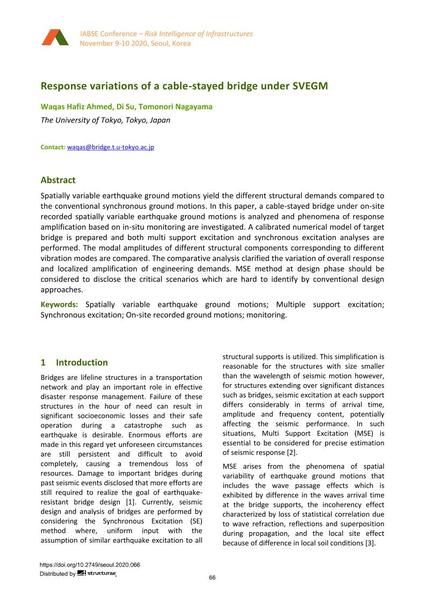Response variations of a cable-stayed bridge under SVEGM

|
|
|||||||||||
Bibliographic Details
| Author(s): |
Waqas Hafiz Ahmed
(The University of Tokyo, Tokyo, Japan)
Di Su (The University of Tokyo, Tokyo, Japan) Tomonori Nagayama (The University of Tokyo, Tokyo, Japan) |
||||
|---|---|---|---|---|---|
| Medium: | conference paper | ||||
| Language(s): | English | ||||
| Conference: | IABSE Conference: Risk Intelligence of Infrastructures, Seoul, South Korea, 9-10 November 2020 | ||||
| Published in: | IABSE Conference Seoul 2020 | ||||
|
|||||
| Page(s): | 66-74 | ||||
| Total no. of pages: | 9 | ||||
| DOI: | 10.2749/seoul.2020.066 | ||||
| Abstract: |
Spatially variable earthquake ground motions yield the different structural demands compared to the conventional synchronous ground motions. In this paper, a cable-stayed bridge under on-site recorded spatially variable earthquake ground motions is analyzed and phenomena of response amplification based on in-situ monitoring are investigated. A calibrated numerical model of target bridge is prepared and both multi support excitation and synchronous excitation analyses are performed. The modal amplitudes of different structural components corresponding to different vibration modes are compared. The comparative analysis clarified the variation of overall response and localized amplification of engineering demands. MSE method at design phase should be considered to disclose the critical scenarios which are hard to identify by conventional design approaches. |
||||
| Keywords: |
monitoring Spatially variable earthquake ground motions Multiple support excitation Synchronous excitation On-site recorded ground motions
|
||||

